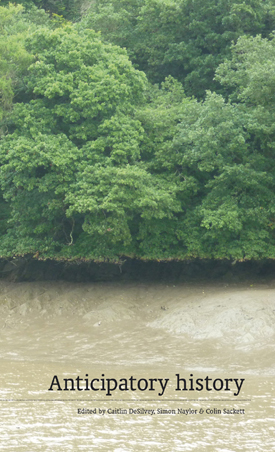Climate and environmental change is happening all around us. The worse predictions seem apocalyptic and terrifying, our most recent ‘end of the world’ narrative along with the immediacies of global terrorism, economic meltdown and well-armed superpowers.
Whether or not we can alter these environmental changes as we would like remains to be seen – but for those of us working within the conservation sector the methods of telling these stories of change, and our rationale for acting on them, is of great concern, particularly when accounting for how we spend public or charitable funds.
Given this complex preamble, what place can art have in all of this? Is it merely window dressing around edges of hard science or can it offer something more valuable?
I was privileged to take part in a series of AHRC funded workshops exploring these issues 2010-11, led by Dr Simon Naylor and Dr Caitlin DeSilvey of the University of Exeter, the focus being ‘Anticipatory History’. The idea, put simply, is researching and writing history with a view to future change. For example, Mullion Cove, a coastal site owned by National Trust (researched and written up elsewhere in detail by DeSilvey), at first glance appears to be the quintessential timeless Cornish cove, with a stone built breakwater and quayside protecting the cove from the harsh Atlantic Ocean.
The longer perspective, informed by both academic and community based research, reveals that it is a relatively recent (19th-century) intervention into the landscape, and one that was never successful either economically, or physically, often requiring repair in the face of weather conditions. National Trust has decided that it cannot repair the breakwater indefinitely, so in the long term, these structures will disappear into the sea. Can this story be told only as one of humans weakness in the face of awesome nature? Or is it a tale of the folly of trying to cash in on an industry while at its peak, and being left with assets costly to maintain thereafter?
Within this context – or indeed many others – art can be used both as process and thing to mediate these situations, leading to the text, as my contribution, below:
Art is both a thing and process, much defined and much debated. In its broadest sense, it is the process and product of making individual or group creativity intelligible to others in tangible form.
In the context of Anticipatory History art is both provocation against and solace towards newly contextualised, and rarely benign, futures. As a discipline that plots routes from past to future through the prism of our current understanding, anticipatory history shares much in common with contemporary art, which has its own research agendas and processes, distinct from, but not always unrelated to, those of science or other academic disciplines.
Landscape change is a subject that concerns many artists: the natural rhythms of time and seasonality can be found in the durational sculptural works of artists such as Andy Goldsworthy and Chris Drury; examples of journeys through landscape are explored by the extensive performances and documentation of Richard Long and Tim Brennan; and the material and political relationship to nature is explored by the installations, events and media works of, among others, Cornelia Parker and Simon Starling. Histories of contemporary art are doubtless being written that uncover how collective anxieties about change in landscape are being expressed by artists today.
Contemporary art offers ways to connect the concerns of anticipatory history to a wider public that reaches beyond the dense data of scientific research and the textual propositions of history and geography. Such artistic expressions may be intellectual, emotional and rigorous, honed by years of individual experience: but their punch could come through a honeyed scent, a raw texture, a haunting sound all set in uncommon juxtaposition.
The National Trust has worked with Red Earth (co-directed by Simon Pascoe and Caitlin Easterby) in creating site specific installations and participatory art events that directly engage with narratives of landscape change. In 2005, a programme called Geograph took place at Birling Gap (East Sussex) where the cliff line of fifty years ago was marked by a delicately traced line of chalk pebbles and boulders, while the predicted erosion line twenty years hence was marked by a procession and flags. These interventions provide creative markers of the dynamic changes within the landscape – and demonstrate how contemporary art can articulate them in powerful ways.
(Freshwater, T., ‘Art’, in DeSilvey, C., Naylor, S., & Sackett, C. (2011) Anticipatory History, Uniformbooks, p.23-24)


